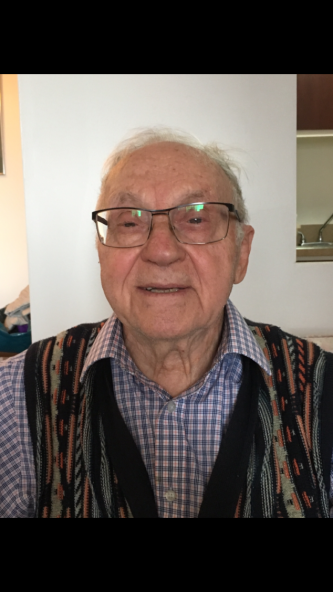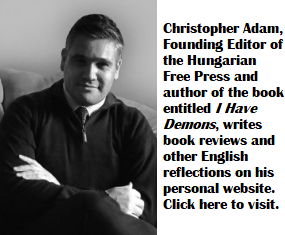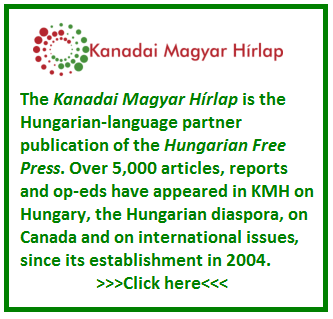My father, Arthur Schwartz, arrived in Canada 70 years ago as one of the 1,123 Jewish orphans that Canada admitted after the Holocaust.
Born in Kosice, Czechoslovakia, in 1923, he grew up in an Orthodox Jewish working-class family. In 1938, Kosice was annexed to Hungary. Hungarian Jews were subjected to persecution and anti-Semitic laws such as work restrictions and the wearing of a yellow star, but were protected from deportation. In early 1944, 20-year-old Arthur was drafted into one of the Hungarian army’s forced labour units for Jewish men. He dug ditches and repaired roads.
In March 1944, German forces invaded Hungary and the moderate Hungarian prime minister was replaced by a Nazi proxy. In Kosice, the Jews were forced out of their homes and into the synagogues, then sent to the local brick factories. The last time Arthur saw his mother was when she was in the brick factory. He spotted her from behind a barbed-wire fence and waved. In May, the deportation of Jews from Kosice and nearby areas began. Arthur’s unit was put to work at the Kosice train station. For three weeks he witnessed the cattle cars crammed with thousands of Jews. He didn’t know where they were being taken.
The winter of 1945 was extremely cold. Arthur and his unit were forced to work outdoors digging trenches. As the Russians approached, his unit was forced to retreat from Kosice to the Austrian border, a distance of more than 100 miles. They marched without proper boots or winter clothing. Arthur eventually lost some toes to severe frostbite.
As conditions deteriorated, most of the 300 young men in Arthur’s unit died of starvation or infectious disease. On Passover 1945, Arthur heard bombs dropping nearby. As each bomb exploded closer to his barracks, he prayed and recited the Ten Plagues. The next day, Russian soldiers arrived and told the survivors they were free to go.
After liberation, there was no organization to provide food, medicine or emotional counselling to the survivors. Arthur and two other survivors from his unit knocked on doors begging for food and shelter. A priest fed them and let them sleep in the barn. Arthur eventually made his way to Budapest where his cousin found him and took him to a hospital. She had survived Auschwitz and she told him that his two sisters had survived, but that his little brother, his parents and his grandmother were among his many relatives who had perished.
After several months in hospital, Arthur recuperated and supported himself by doing odd jobs and selling cigarettes on the black market. One day while at a public bathhouse, he was robbed of his clothing. The only surviving photo he had of his late father was in a jacket pocket. The photo showed his father, my grandfather, as a young man in a First-World-War German military uniform, wearing medals of bravery he’d received from the Germans after losing an eye to shrapnel. (In the Second World War, the Germans sent my grandfather to Auschwitz where he died before liberation.)
After losing his clothes and the photo in the bathhouse, Arthur borrowed clothing and went to the police station to report the robbery. The anti-Semitic police beat him up.
In 1947, he was conscripted into the Czech army’s horse artillery for three months. In early 1948, he overheard some men on a street corner talking about a ship that was going to take Jewish orphans to live in Canada. To be eligible for the War Orphans Project, Jews had to be less than 18 years of age. By then Arthur was 24 years old and he’d received another army draft notice. His brother-in-law, a printer, got a birth certificate for a boy named Samuel Weissberg who “never came back” and he printed a fake document making Arthur a 17-year-old student from Poland.
Arthur travelled to Southampton, England, where, on March 16, 1948, he boarded the Cunard White Star Aquitania with other Jewish orphans. Passage was sponsored by the Canadian Jewish Congress. When he disembarked at Pier 21 in Halifax, an immigration official called out “Samuel Weissberg” several times until Arthur remembered that was his assumed name. He was sent by train to Montreal.
A Jewish aid agency made arrangements to put him up in a boarding house, gave him a small allowance and told him where to go find work. There was no assistance of any type from the Canadian government. The Jewish community was required by the government to take full responsibility for the orphans. Arthur found work as a dress cutter in a factory and supported himself.
In 1953, Arthur informed the authorities that he’d come to Canada with a forged document. He wanted to clear his conscience and go by his real name and age. The Canadian government threatened to send him back to Czechoslovakia. He signed an affidavit swearing he was an anti-Communist and was finally allowed to stay. He eventually became a citizen, married and started a family.
Today, as he approaches his 95th birthday, he thanks God for each new day. And each year at the family seder in Montreal, he recounts the story of his liberation on Passover.
Gloria Schwartz
*
This story originally appeared in the 26 March 2018 print issue of the Ottawa Jewish Bulletin (page 5).




